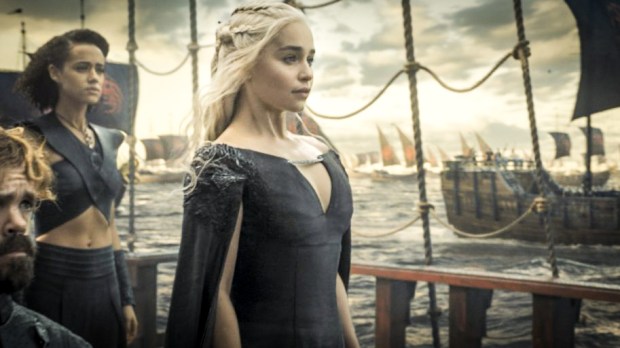Religion permeates the popular HBO series Game of Thrones, from the religious cult of the Sparrows with its similarities to the Inquisition, and which follows the Faith of the Seven, to the connection between the worship of the God of Light and the foundations of Zoroastrianism.
At the beginning of the series, the territories we learn about are distinguished by religion, since religion is what organizes the kingdoms: the North is the land of the Old Gods and their weirwoods; the capital of Westeros is the seat of the Great Sept, where the highest authorities of the Faith of the Seven gather. Since religion serves to contextualize the story, the series shows the religions’ aesthetics and rituals, from protagonists such as Ned Stark praying to the Old Gods in the woods, to funeral rights at King’s Landing.
However, religion goes beyond being the context (historical, but reminiscent of both medieval times and the modern age) for Game of Thrones, to becoming a source of power, also linked to feminine power.
As men start to be in short supply (due to direct war casualties and various other deaths in the war to govern the Seven Kingdoms), women—and their relationship with spirituality—begin to take on greater importance. The war has partially undermined previous sources of legitimacy for power, such as family relationships or the charisma of those seeking power, and so there are leaders who start to seek the endorsement of religious authorities to support their cause. However, religious figures such as the High Sparrow and the priestesses of the Lord of Light also have ambitions of their own. As a result, the series shows constant negotiations between public and religious authorities.
In this series—especially the on-screen version (more than in the books)—sex, women, and religion are connected. The priestesses who serve the Lord of Light, such as Melisandre, use their sensuality to seduce the people and their political leaders; the Sparrows, by contrast, impose a vision of female sexuality basically limited to reproduction and subordination to men’s desire. As a result, women’s bodies are given a new meaning: for Melisandre and the other priestesses, their bodies are a source of power, whereas the High Sparrow forces Cersei Lannister, the Queen Regent at the time, to walk nude before all the people of King’s Landing as penance for her sins.
Daenerys Targaryen: A messianic role?
The Mother of Dragons, Daenerys Targaryen, is—like John Snow—a character with a messianic plot line throughout the whole series. She has a right to the Iron Throne, because she belongs to the dynasty that governed Westeros for three centuries, and she has three dragons which give her both symbolic (because of their magical nature) and military power. However, Daenerys must also look after them, to the point where sometimes they seem more like a burden than a source of power.
The dragons are born when she loses her biological child and her husband, who was the leader of a powerful tribe of warrior nomads. Thus, the loss of her child and her disassociation from a male authority figure coincide with her rise to power. She shares this sort of situation with Cersei Lannister, who is finally crowned Queen of the Seven Kingdoms after the death of her three children, two of whom were, in turn, kings.
These are some of the ideas that were presented at the International Conference on Religion & Spirituality in Society at the Imperial College in London, by Marta Roqueta, who is a journalist, editor of Zena magazine, and student in the Masters in Gender Studies program at the School of Oriental and African Studies (SOAS) of London.
The presentation is part of a wider study being carried out by the Banquerna Observatory on Media, Religion and Culture at Ramon Llull University. It will be published later on, including examples from all seasons of the HBO series.

